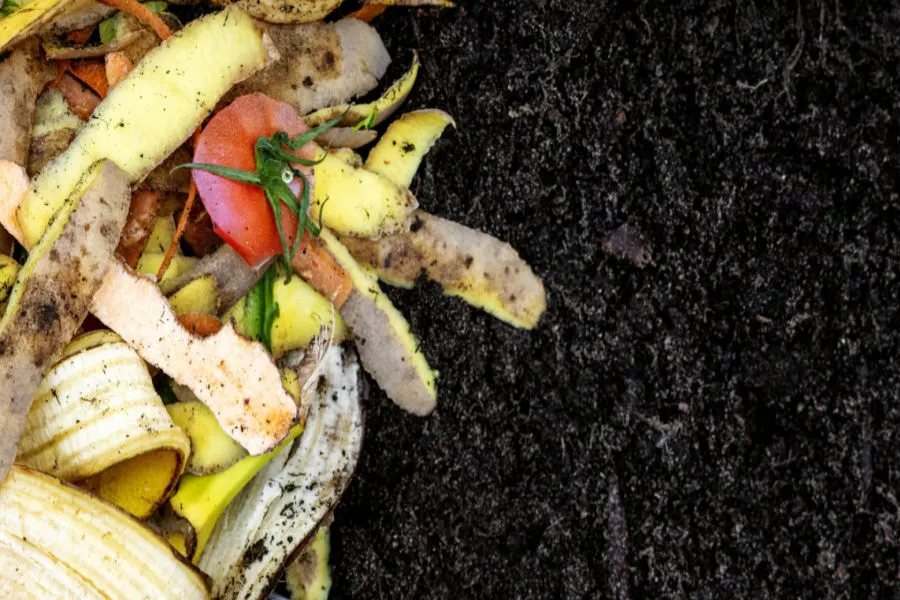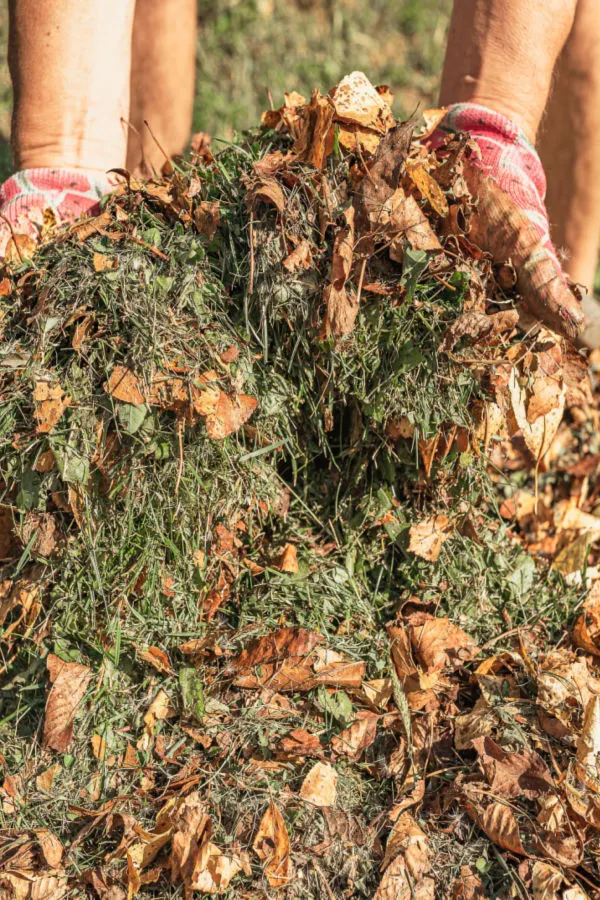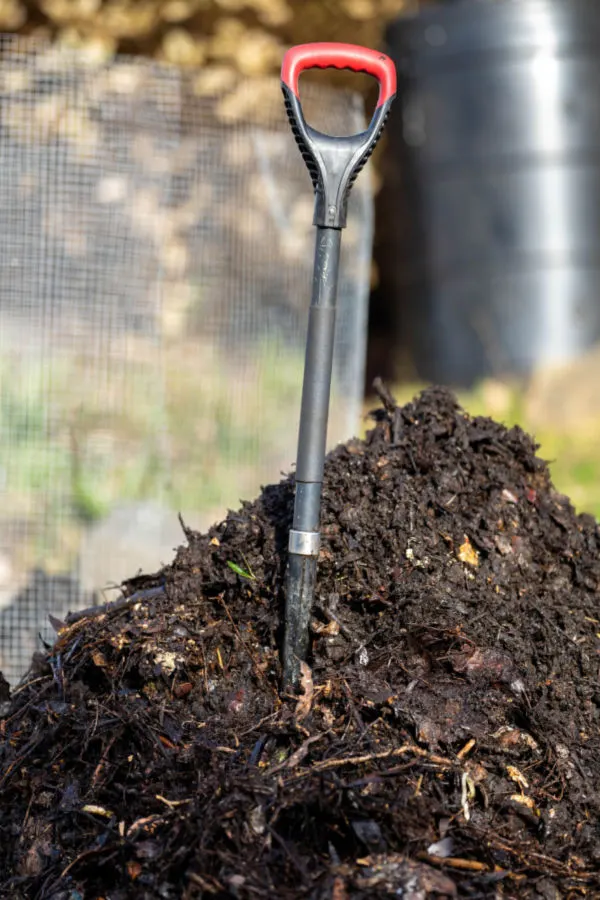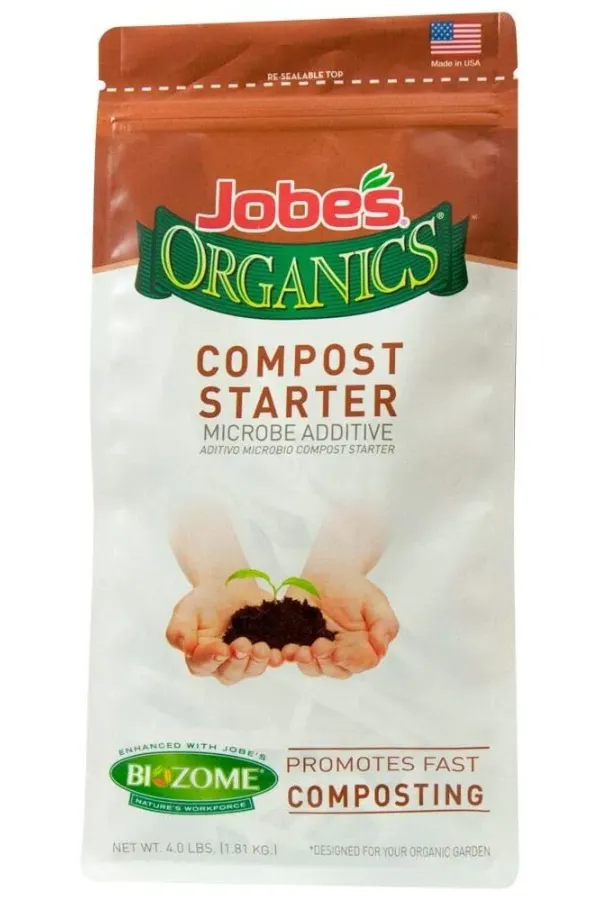Want to make great compost to power your garden, flowerbeds and more?
A compost pile is a huge asset for the home landscape. The finished compost it creates helps to build and recharge soil in vegetable gardens, flowerbeds, raised beds and more. Even more, it can be used to energize and fertilize plants at every stage of their growth.
But as good as compost is – it can be a challenge to make for many home gardeners. All too often, home compost piles turn into either a mushy mess, or a forgotten mass of twigs, leaves and other yard debris in the back corner of a yard.

Although any backyard pile will eventually decompose and turn into compost, messy or inactive piles can be an issue. Overly wet or saturated piles can be oily and smelly. Not only can they be tough on the nose, they can also attract vermin. Likewise, dry, crusty, inactive piles can become home to a whole slew of insects and pests as well.
But the good news is, it doesn’t have to be that way! In fact, with just a few simple tips, you can create a fast working pile that heats up quickly, and creates incredible amounts of “Black Gold” for you flowerbeds and gardens.
With that in mind, here is a look at the four simple secrets to creating and maintaining an amazing backyard compost pile!
4 Simple Secrets To Make Great Compost
#1 Shredding The Ingredients
Want a perfect compost pile that makes great compost as fast as possible? Then shred your ingredients before adding to the pile! One of the biggest reasons home compost piles take so long to decompose is the materials in them are simply too big.
Chopping and shredding materials before adding gives them a jump start on decomposition. All of those torn, rough edges allow for more surface areas to be exposed in the pile. Not to mention, the smaller the material, the less it needs to break down.
Best of all, shredding doesn’t have to be difficult or expensive. Yes, you can invest in a small chipper / shredder if need be, but there are other fast, easy and economical ways to shred materials.

Use a push or riding mower to quickly shred leaves, grass or straw. In addition, cut kitchen scraps with a few extra chops of the knife before adding. But whatever you do, keep those ingredients as small as possible. You will be rewarded with incredible compost all the more quickly.
#2 Getting The Right Mix Of Materials In Your Pile – How To Make Great Compost
There are two basic types of materials that go in a compost pile – brown material (inactive), and green material (active). And a compost pile works best when it’s made up of the right mixture of the two.
Browns are carbon based materials such as leaves, twigs, wood chips, ashes, dry grass and clippings. Greens on the other hand are nitrogen based. These are materials that heat up the pile to decompose the browns.
Greens include chicken, rabbit, horse or cow manure, fresh vegetable scraps, green lawn clippings and even coffee grounds. Greens are often the most lacking materials in home compost piles.
How To Create The Right Mix For The Perfect Compost Pile
So what is the right mix of browns and greens? As a good rule of thumb, a compost pile breaks down best when there is a ratio close to 4 parts of brown material (carbon), to 1 part green (nitrogen).
Do you have to be exact? No. But if you stay close to the ratio, the pile heats up and breaks down faster. As an example, if you put four buckets of leaves in your pile, you need to add a bucket of manure, coffee grounds or fresh green lawn clippings to keep the pile in balance. (See: 5 Things To Never Put In A Compost Pile)
Creating the right-sized pile with those ingredients is also important. If a pile is too small, it will not generate enough internal heat for decomposition. And if it’s too big, you may not be able to turn it at all.
As it turns out, a pile at or around 3′ high x 3′ wide works best. It is large enough to create heat. And yet, still small enough to manage for the gardener when turning.
#3 Turn Your Compost – How To Make Great Compost
Like humans, a compost pile needs oxygen to breathe, live and work. And the best way to give a pile oxygen is to turn it frequently.
Turning a pile every few days will drastically reduce the time it takes to create finished compost. As a pile breaks down inside, it uses oxygen to fuel the decomposition. And as the oxygen becomes depleted, the process slows.
But turning the pile frequently reintroduces oxygen into the center of the pile where it is needed most. The more oxygen a pile can get, the hotter it can get in the core. And even better, with more oxygen, it can stay hotter for a longer time period.

Use a pitchfork or shovel to lift and turn ingredients at least once a week. Every few days is even better. Try to place the outer ingredients in the center of the pile as you flip to create the perfect level of oxygen in the compost pile.
#4 Keep Your Pile Moist – How To Make Great Compost
In addition to oxygen, a compost pile needs water to thrive as well. And when there is a lack of moisture within the pile, decomposition will quickly slow to a halt.
As you turn the pile, add a few gallons of water if it appears dry in the center. During extremely hot periods, a tarp can be used to help retain moisture to the pile. Remember, without moisture, the pile will slow decomposition to a crawl.
So how much moisture is enough? A perfect compost pile should have the consistency of a well-wrung sponge. Damp, but not dripping wet is ideal.
Unfortunately, too much moisture can be detrimental to your pile too. A saturated, water-logged pile will slow decomposition even more than a dry pile. Keep piles covered with a tarp during periods of excessive rain to shed excess water. Also, make sure your pile doesn’t sit in a low spot where water can pool.
A Few Extra Tips – How To Make Great Compost
Finally, when starting a new pile, always use an activator to jump start the decomposition process. An activator is nothing more than a supply of organisms and bacteria that help to start breaking a pile down faster.
The best form of an activator is compost from your old pile! It already has every organism you need to begin breaking down materials.
Finished compost is teeming with all types of bacteria and organisms. And a few buckets of old compost placed into a new pile will quickly re-introduce these organisms to start breaking down the fresh material.
If you are starting a pile from scratch and don’t have access to old compost, use a good quality compost starter as a substitute. Product Link : Compost Starter – Jobes All Natural
Here’s to creating the perfect compost pile this year, and being rewarded with healthier soil and plants!
Follow Our Facebook Page For Great Gardening Tips And Advice! This Is My Garden Facebook Page
This Is My Garden is a garden website created by gardeners, for gardeners. Jim and Mary Competti have been writing gardening, DIY and recipe articles and books and speaking for over 15 years from their 46 acre Ohio farm. They publish three articles every week, 52 weeks a year. Sign up today to follow via email, or follow along!

